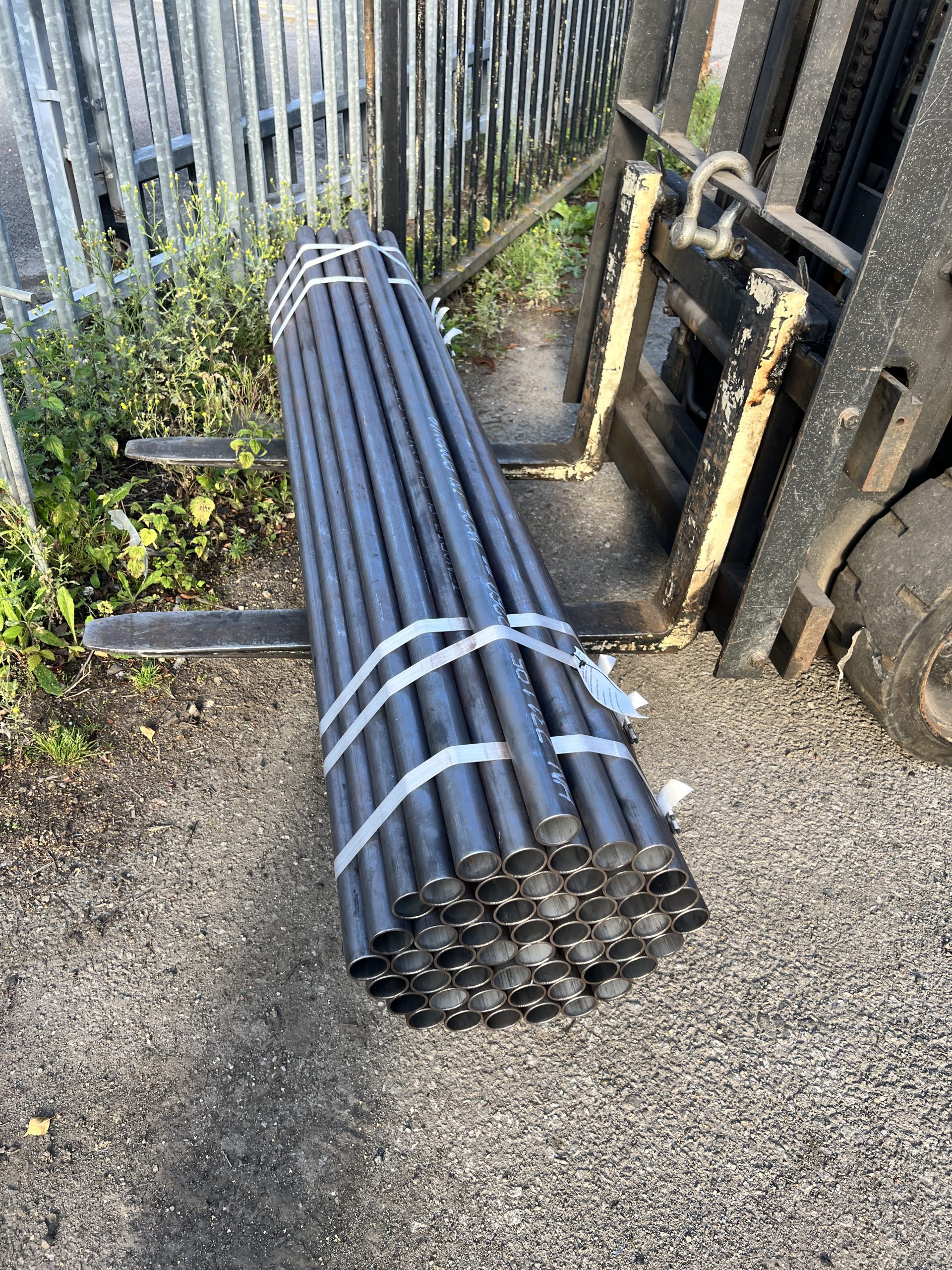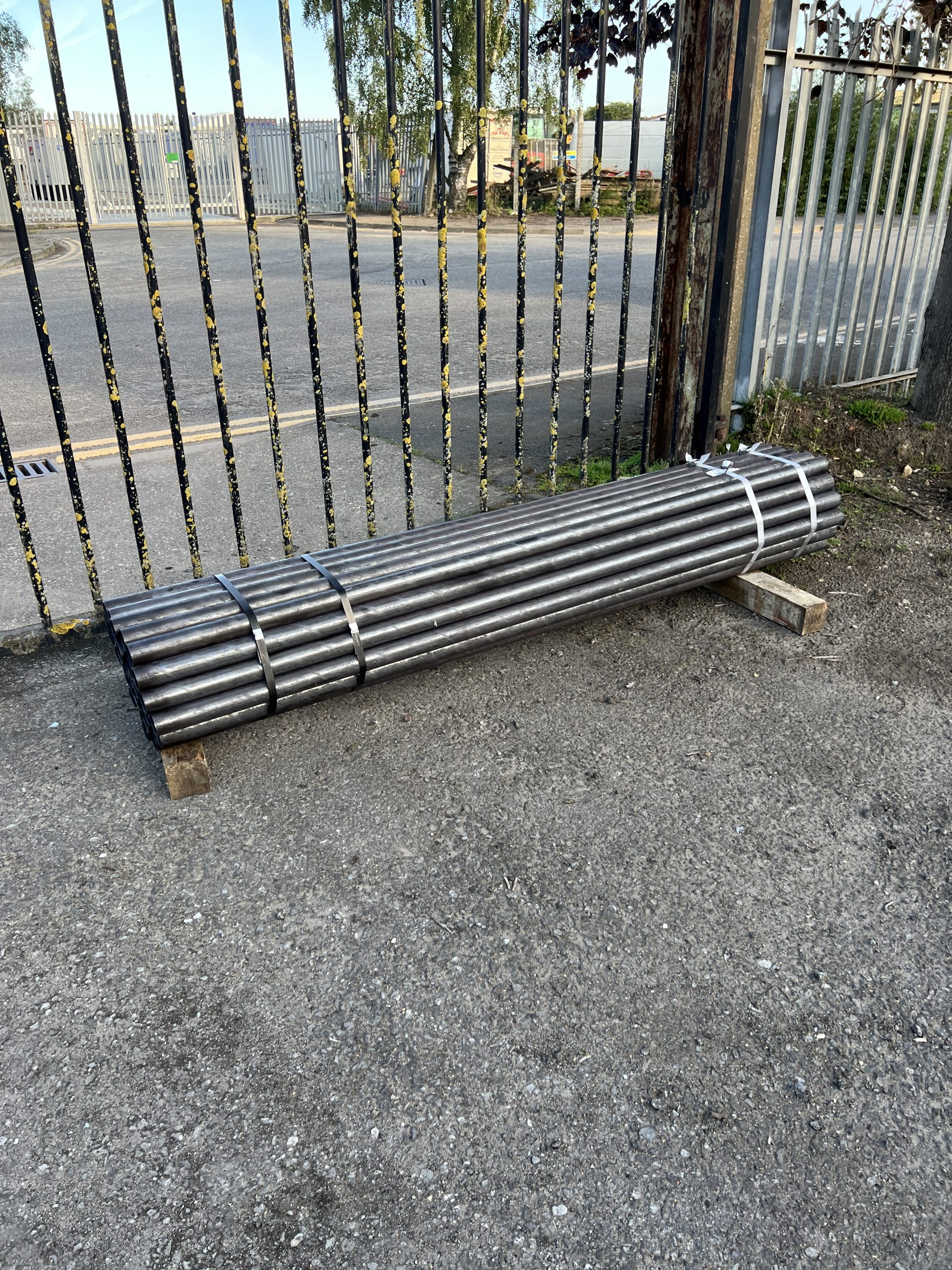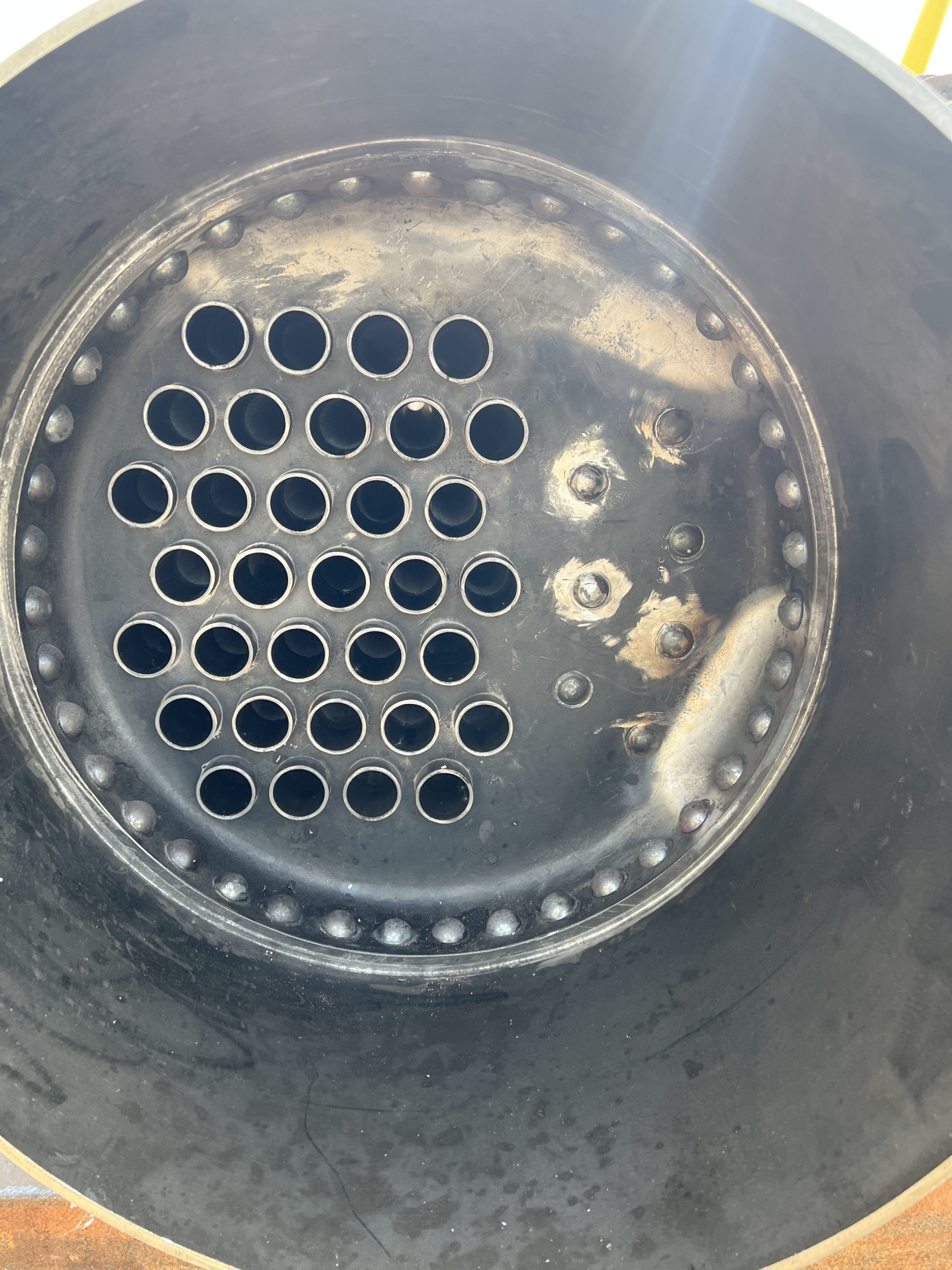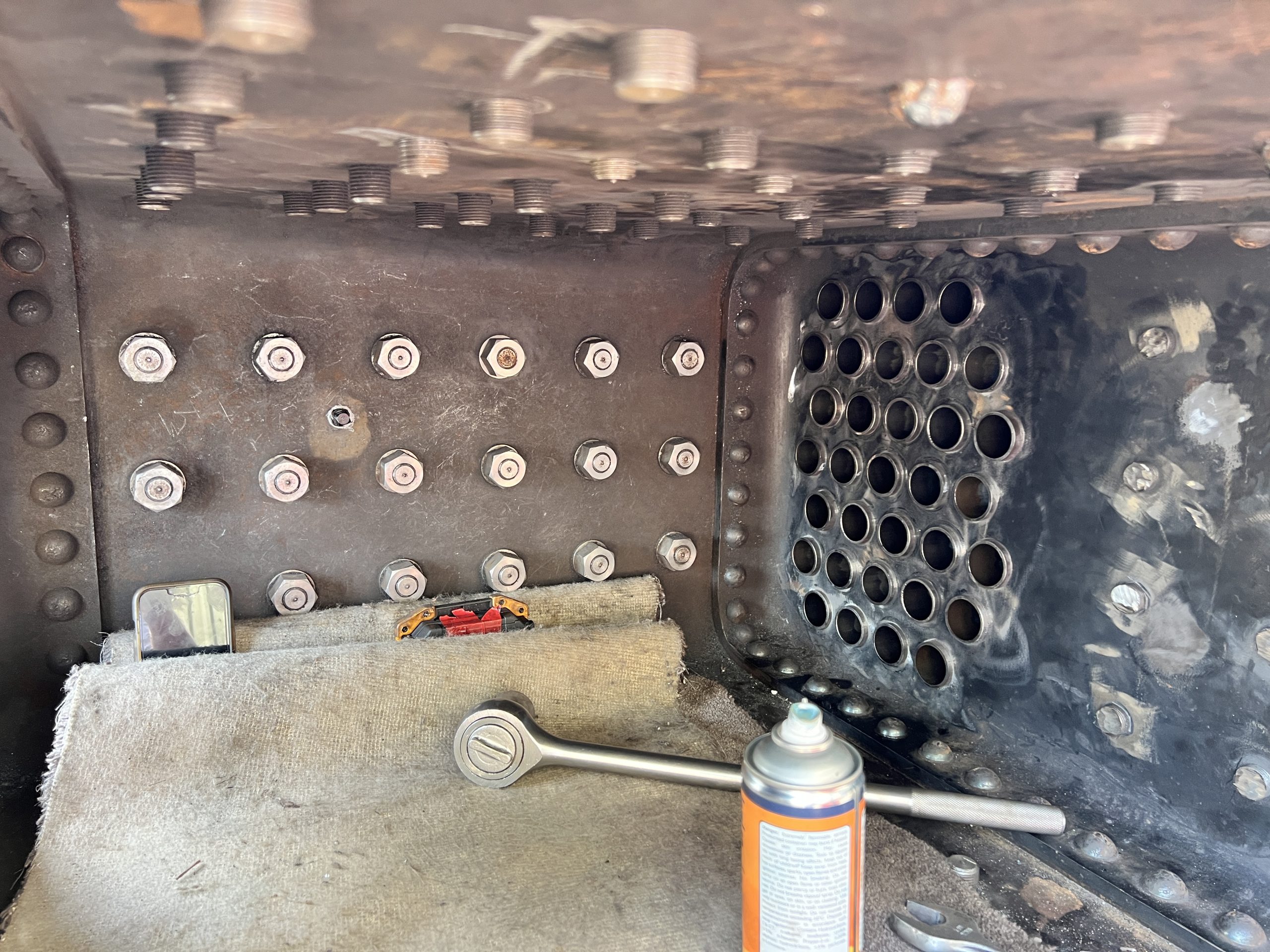Another 100+ boiler tubes delivered to go into engines nearing completion
More boiler tubes delivered ready for fitting in the coming weeks. One engine in particular has 54 of them to go in!
We can remove, supply and fit boiler tubes to vintage or modern boilers. We have the ability to do this within our workshop or at your own premises.
The tubes we use are pre-swaged at one end if required to make a much neater and faster job.
JE&T can supply and fit boiler tubes on or off site
Check out this video of some tube rolling going on in an industrial boiler. We will try and get a video up on our Instagram page soon
How do we fit boiler tubes?
Swaging boiler tubes involves a metalworking process in which a tube is reduced or reshaped by forcing it into a desired shape or size using mechanical or hydraulic pressure. This process is often used in the manufacturing, maintenance, or repair of boilers and heat exchangers. Swaging can be used to create tight joints, connect tubes, or repair damaged sections.
Here’s a general overview of how swaging of boiler tubes might be carried out:
1. Preparation:
- Ensure you have the appropriate swaging equipment, which may include hydraulic swaging machines or hand-operated swaging tools.
- Select the correct swaging die or tool size based on the desired reduction or reshaping of the tube.
- Clean the surface of the tubes to remove any dirt, debris, or oxidation that could affect the swaging process.
2. Setup:
- Position the swaging machine or tool securely in place. Hydraulic swaging machines should be properly anchored and aligned.
- Insert the tube into the swaging die or tool. Ensure that the tube is properly aligned and supported to prevent any bending or distortion.
3. Swaging Process:
- Apply pressure using the swaging machine or tool. For hydraulic swaging, the machine’s hydraulic system will generate the force needed for the swaging process. For hand-operated tools, manual force will be applied.
- The pressure should be applied gradually and evenly to avoid excessive deformation or damage to the tube.
- As pressure is applied, the tube will begin to reshape and reduce in size according to the shape of the swaging die or tool.
4. Inspection:
- Periodically inspect the tube during the swaging process to ensure that it is being swaged evenly and accurately.
- Measure the tube’s dimensions to verify that it has been swaged to the desired specifications.
5. Finishing:
- Once the desired swaging has been achieved, release the pressure and carefully remove the tube from the swaging die or tool.
- Inspect the swaged end of the tube for any defects or irregularities.
It’s important to note that swaging requires skill and precision to ensure that the tubes are swaged correctly and safely. Improper swaging can lead to leaks, weak joints, or other issues in boiler systems. Therefore, it’s recommended to have qualified professionals or technicians with experience in swaging and boiler maintenance carry out the process.
Always follow safety guidelines, manufacturer’s recommendations, and best practices when performing any kind of metalworking or boiler maintenance procedures.
What things should you consider when purchasing boiler tubes?
The requirements for boiler tubes can vary depending on the type of boiler, its operating conditions, and the specific industry standards and regulations applicable in your region. However, I can provide you with some general considerations and requirements that are often relevant when selecting and using boiler tubes:
- Material Composition: Boiler tubes are typically made from materials that can withstand high temperatures, pressure, and corrosive environments. Common materials include carbon steel, alloy steel, stainless steel, and in some cases, non-metallic materials like ceramic or composite tubes.
- Strength and Toughness: Boiler tubes must have adequate mechanical strength and toughness to withstand the stresses and strains that occur during boiler operation, including thermal cycling and pressure fluctuations.
- Corrosion Resistance: Boiler tubes may be exposed to various corrosive substances, such as water, steam, combustion gases, and chemicals. The tubes must be resistant to corrosion and oxidation to ensure a long service life.
- Temperature and Pressure Ratings: The tubes must be capable of withstanding the high temperatures and pressures associated with the specific boiler design and operating conditions.
- Dimensional Accuracy: Boiler tubes should have precise dimensions and tolerances to ensure proper fit and function within the boiler system.
- Weldability: Boiler tubes often require welding to connect them and create the necessary boiler structure. The chosen material should have good weldability to ensure strong and reliable joints.
- Heat Transfer Efficiency: Efficient heat transfer is essential for boiler performance. The internal surface of the tubes should facilitate heat exchange while minimizing fouling and scaling.
- Regulatory Compliance: Boiler tubes must adhere to relevant industry standards and codes, such as ASME (American Society of Mechanical Engineers) Boiler and Pressure Vessel Code or equivalent standards in other regions.
- Quality Control and Testing: Rigorous quality control measures and testing, such as ultrasonic testing, hydrostatic testing, and metallurgical analysis, are often performed to ensure the integrity of the tubes.
- Tube Lifecycle and Maintenance: Consideration should be given to the expected lifecycle of the tubes and any required maintenance or replacement intervals.
- Tube Form and Size: The tubes’ form (straight, bent, coiled) and size should be appropriate for the boiler’s design and installation requirements.
- Environmental Considerations: If the boiler operates in an environment with specific environmental regulations (e.g., emissions control), the choice of materials and tube coatings may be influenced by these factors.
It’s important to consult with boiler design and manufacturing experts, as well as refer to relevant industry standards and guidelines, to ensure that the tubes selected meet the specific requirements of your application.




